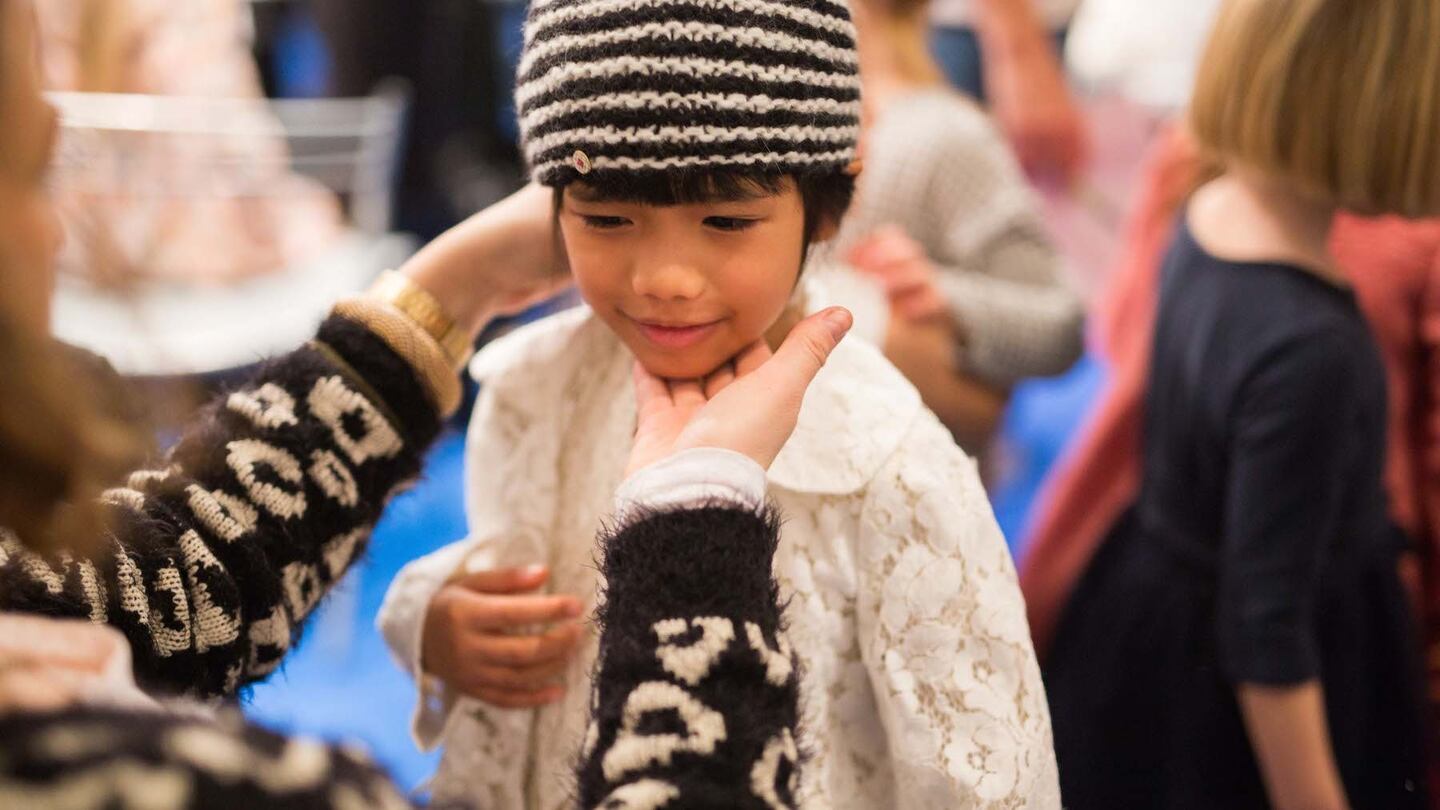
The Business of Fashion
Agenda-setting intelligence, analysis and advice for the global fashion community.

Agenda-setting intelligence, analysis and advice for the global fashion community.


FLORENCE, Italy — From $3,000 couture gowns to tiny studded trainers and wrap-round sunglasses for toddlers, the childrenswear market has come of age. Once typified by pinafores and sailor suits, the market was worth $135.6 billion in 2015 and now represents 12 percent of the overall apparel market. At the heart of this fragmented and evolving fashion market is Pitti Immagine Bimbo, the childrenswear-focused Florentine trade fair staged twice a year by Pitti Immagine, the organiser of Pitti Immagine Uomo and Pitti Immagine Filati.
Today, Pitti Bimbo welcomes 6,900 buyers and over 10,000 international visitors to its biannual three-day-event held in Florence’s Fortezza da Basso, a Renaissance era military complex. Through the Centro di Firenze per la Moda Italiana, the Pitti Immagine fairs enjoy financial and promotional support from the Ministry for Economic Development (MiSE — Ministero dello Sviluppo Economico) and the Italian Trade Agency (Agenzia ICE). This support involves servicing members of the trade from abroad, communicating with new markets and publicity campaigns in other countries.
“Pitti is the most important international fair because of the buyers and brands that attend it. The international buyers are here and it attracts the biggest brands. Other exhibitions I attend, the trade shows in Paris, Tokyo, Amsterdam, Copenhagen and Seoul, they are focused primarily on smaller brands,” explains Giuliana Parabiago, previous editor-in-chief of Vogue Bambini for 18 years, who now works as a PR and marketing consultant for parent company Pitti Immagine.
We have created a permanent observatory of the global chidlrenswear market.
The tradeshow first burst on to the scene in 1975. Although it launched with just eight Italian brands, including Simonetta (which continues to show at the fair), Pitti Bimbo quickly established itself as a calendar fixture in a still nascent childrenswear market. "When I started in 1983, nothing was really happening in the market. Every season the collections shown were the same styles in the same fabric. The style was 'bon chic,'" says Parabiago.
“It was the biggest show straight from the beginning,” says Linda McLean, the childrenswear blogger known as Smudgetikka. But curation was always key. “Pitti Bimbo has always focused on quality. It has always selected potential exhibitors according to rigorous admissions criteria. To be an exhibitor, you must not only have an interesting, well-made collection, but you must also have a valid organisation,” explains Agostino Poletto, marketing director and deputy general manager of Pitti Immagine. There is space for smaller brands, but they must have potential for development. “As a result, our buyers feel protected, while having the advantage of doing business in a single venue, but with a range and assortment of quality products from the market,” he continues.
Over the ensuing decades, as the buoyance of the childrenswear market prompted luxury brands including Dolce & Gabbana, Gucci, Armani and Ralph Lauren to shift away from licensing, while tempting supermarkets and fast fashion giants to enter the fray, Pitti Bimbo has adapted with the evolving market.
For one, the trade fair is constantly researching and gathering information on the global childrenswear market. “You need research, research, research! One of our most important activities is scouting: our research and scouting team travel the world to contact new, creative, interesting brands. Research and experimentation keep us following a path of continuous improvement. We have created a permanent observatory of the global chidlrenswear market and have always adopted an international outlook,” says Poletto. “We have collaborators who keep an eye on up-and-coming designers in various countries. We scout new talents, we travel and we use the Internet. The market is no longer homogenous — it’s become crowded.”
We have now triggered a sort of virtuous circle between exhibitors, who have learned that they can improve their businesses and aesthetics from the exchange of opinions and experiences that takes place at Pitti.
“We never stop trying to understand what the market wants and how we can be a part of it. We try to insert new perspectives and new content anticipating trends and consumption,” continues Poletto. “We have now triggered a sort of virtuous circle between exhibitors, who have learned that they can improve their businesses and aesthetics from the exchange of opinions and experiences that takes place at Pitti. The event, which started out with just clothing, is now veering towards lifestyle brands, opening its horizons on other worlds for children,” she continues.
“Once [Pitti Bimbo] created the right formula, it never mechanically repeated it: with each new season — through market analyses, brainstorming and feedback, and collaboration with experts — it evolves in terms of its structure, proposed services, and communication style,” says Poletto.
In sync with the "fashion-isation" of childrenswear, Pitti Bimbo was the first to see the potential in staging fashion shows for childrenswear. "We started offering exhibitors the chance to hold fashion shows in different venues with different setups when they expressed this need. It was a time in which the childrenswear market was undergoing great change and the trade fair stand was no longer sufficient for presentation. Exhibitors needed a genuine stage for presenting their point of view and strengthening their brand identity through different types of storytelling. At this point we organised a series of services: informal shows, productions, and runway shows, providing all the necessary assistance and support," explains Raffaello Napoleone, chief executive of Pitti Immagine.
“You have two days of catwalks with five shows a day. Similar to womenswear,” says McLean. “I think that made quite an impact. Certainly in terms of publicity — it made people much more aware of childrenswear.” By adopting adultwear practices and applying them to the childrenswear market, Pitti Bimbo trained its market to expect higher quality communications and more fashion driven aesthetics, creating more reasons to buy.
Since 2014, a section of the fair, entitled Kidsevolution, has invited new emerging designers from the adult fashion world to create a childrenswear capsule collection, shown at the fair, says Parabiago. Founded in partnership with Alessandro Enriquez, the editor of Vogue Bambini and a contributor to Elle Italia, this season’s Kidsevolution collaborations include Les Bohémiens, Nhivuru and Mitchumm Industries.
The fair now welcomes buyers from over 78 different international markets, including Russia, Spain, the UK, Germany, France, China and Turkey. And looking ahead, Pitti Bimbo plans to increase its international presence by staging regional activations in key geographies, adopting a similar strategy to the Pitti Uomo x Isetan take overs, which saw the Italian trade fair stock an entire floor of the iconic Japanese department store.
“It could definitely be good opportunity to organise a Pitti Bimbo mission abroad, with a fashion show staged by some of our key brands. The benefit of organising a tour of some of our key brands is that we can help strengthen and energise them, so that they have the ability to enter markets as far a field as Dubai for example. Childrenswear brands need to communicate in other kinds of ways beyond advertising. This could be an interesting opportunity for Pitti and its brand partners,” says Napoleone.
“I’ve been working in childrenswear since late 1997 and at that point I probably only dealt with 60 labels. Now I see 600. A number of other geographies have all really taken off in the last 10 years — it really is opening up,” says McLean.
“We have always sought to encourage relationships between exhibitors, to promote projects, ideas, conferences, seminars and studies that will aid growth in the market and prompt new ideas,” says Napoleone. “Our mission is not merely to sell simple exhibition space, but to be a place of reference, a place where things happen.”
To coincide with the 83 Edition of Pitti Bimbo (Thursday 23rd - Saturday 25th June, 2016), The Business of Fashion presents a Special Report on the Childrenswear Market, sponsored by Pitti Immagine. Look out for in depth market analysis and global coverage of the brands and the retailers innovating in the childrenswear space each day of the fair.
From analysis of the global fashion and beauty industries to career and personal advice, BoF’s founder and CEO, Imran Amed, will be answering your questions on Sunday, February 18, 2024 during London Fashion Week.
The State of Fashion 2024 breaks down the 10 themes that will define the industry in the year ahead.
Imran Amed reviews the most important fashion stories of the year and shares his predictions on what this means for the industry in 2024.
After three days of inspiring talks, guests closed out BoF’s gathering for big thinkers with a black tie gala followed by an intimate performance from Rita Ora — guest starring Billy Porter.